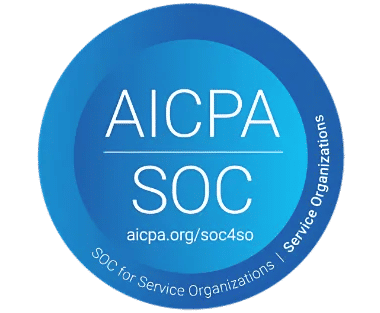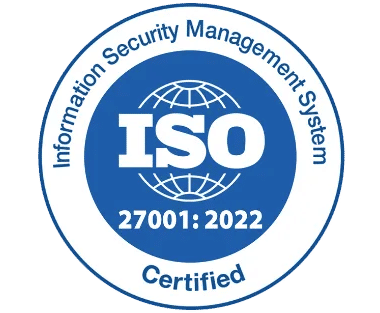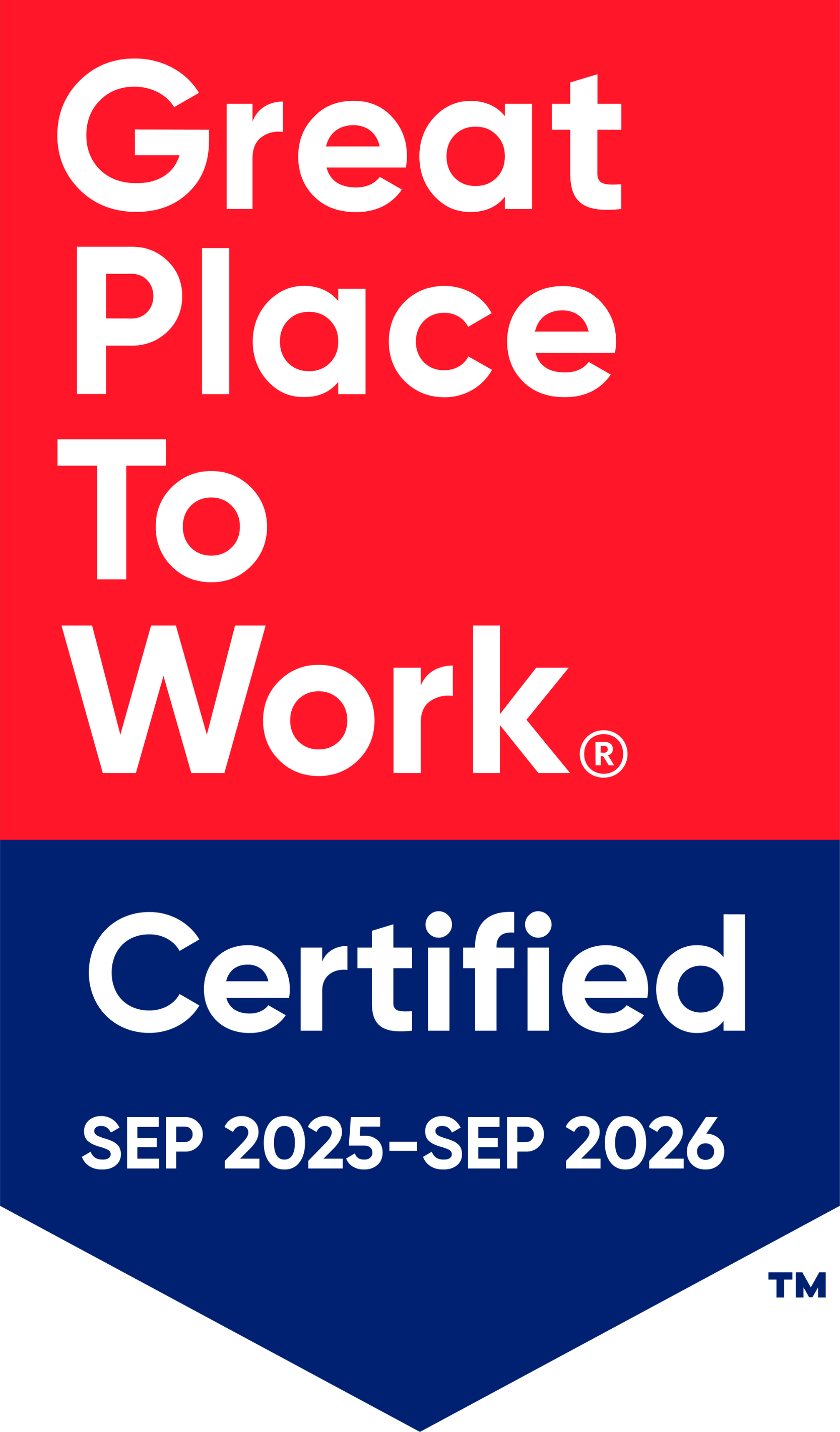
Every business leader understands the weight of negotiating contracts critical details, tight deadlines, and the pressure to get the best terms possible. But what if this could be different? What if your negotiations could be simpler, faster, and far more efficient, without compromising quality or leaving room for costly errors?
With help of contract negotiation software your process or negotiating terms becomes more quicker and easier. This gives businesses the flexibility to focus on innovation and improve service offerings, ultimately fostering stronger, long-lasting relationships with vendors.
This innovation transforms your contract negotiation workflow, giving your team the tools they need to negotiate smarter and faster.
Negotiating agreements is key to building strong business relationships and ensuring clear agreements. With 70% to 80% of business operations governed by contracts, effective negotiation helps streamline processes, reduce risks, and create value for all parties. A well-structured approach leads to faster agreements, stronger partnerships, and long-term success.
What Is Contract Negotiation Software
Contract negotiation software is a specialized tool designed to simplify and enhance the process of negotiating contracts.
It helps two or more parties engage in discussions about the terms and conditions of their agreement, ensuring that all terms are clearly outlined and agreed upon efficiently.
The goal is to streamline the negotiation process and reach a legally binding contract with minimal delays or errors.
This software either focuses specifically on the negotiation stage or offers a comprehensive solution that manages the entire contract lifecycle from creation to final approval.
By automating administrative tasks, providing real-time collaboration features, and reducing the chance of human error, it enables faster, more accurate negotiations, allowing businesses to save time and improve their contractual outcomes.
Contract Negotiation Software Across Industries
Contracts are crucial for all businesses, but some departments require specialized tools to handle complex negotiations efficiently. Contract negotiation software is especially useful for
1) Legal Teams
Lawyers and in-house legal professionals use this software to manage compliance, track obligations, and minimize risks associated with legal agreements.
2) Procurement Departments
Companies that manage multiple vendors and suppliers benefit from automated contract negotiations, ensuring they get the best terms.
3) Sales Teams
Client agreements, partnership deals, and service contracts require structured negotiation processes to secure revenue-generating deals.
4) Finance Teams
Managing financial agreements, investment contracts, and payment terms becomes easier with structured negotiation software.
5) HR Departments
Employee agreements, non-disclosure agreements (NDAs), and policy documentation require seamless contract management.
Whether a company handles hundreds or thousands of contracts annually, Contract negotiation software helps optimize workflows and mitigate risks
Key Features of Contract Negotiation Software
Modern Contract negotiation software is designed to streamline the entire contract lifecycle, from initial drafting to execution and post-signing management.
1. Centralized Document Repository
It offers a common repository system for all documents, including contracts, drafts, and revisions. This feature ensures that all stakeholders have easy access to the latest versions, reducing confusion and ensuring that everyone is on the same page.
With secure storage and organized document management, you can say goodbye to endless email chains and lost files, streamlining the entire process.
2. Accelerating Decision-Making
Efficient decision-making is crucial during the negotiation process. Automated contract approval workflows allow contracts to move smoothly through predefined approval steps, ensuring that each stage is completed quickly and accurately.
This feature removes challenges, reduces delays, and helps keep negotiations on track, leading to faster deal closures and improved business efficiency.
3. Real-Time Collaboration and Editing: Seamless Teamwork
Collaboration is a key factor in successful in the workflow, and contract negotiation software enhances this by enabling real-time editing and commenting.
Stakeholders, whether internal teams or external parties, can collaborate on the same document simultaneously, ensuring that feedback is immediately incorporated, and progress continues without delays.
This fosters effective teamwork and ensures that everyone is aligned throughout the process.
4. Intelligent Clause Library
The system includes an intelligent clause library with pre-approved terms that can be quickly inserted into contracts.
This feature not only ensures consistency across all agreements but also reduces the time spent drafting terms from scratch.
By leveraging these ready-made clauses, businesses can expedite the negotiation process while maintaining legal accuracy and compliance.
5. Version Control and Tracking: Complete Transparency
Tracking changes is essential to avoid mistakes and ensure transparency in contract deals. Version control allows you to monitor all modifications made to the contract, providing a clear, accurate record of each revision.
This amazing feature helps you track progress, compare different versions, and ensure that all stakeholders are working with the most current information, reducing the risk of errors and miscommunication.
6. Proactively Address Potential Issues
The system helps identify potential risks early by flagging unfavourable terms or conditions.
This proactive feature allows you to address issues before they become problems, ensuring that your contracts are both legally sound and, in your business’s, best interest. By spotting potential risks early, you can make informed decisions and negotiate more favourable terms with confidence.
7. E-Signature Integration
Once the terms are agreed upon, securing signatures quickly is vital to finalizing the contract. The system integrates e-signature functionality, enabling you to collect signatures electronically in a secure and efficient manner.
This eliminates the need for physical paperwork, speeds up the contract signing process, and ensures that contracts are executed promptly, facilitating quicker deal closures.
8. Customizable Templates: Tailored to Your Needs
Every contract is unique, but many elements are common across agreements. The tool provides customizable templates, allowing businesses to create contracts that meet specific needs while maintaining consistency.
Whether it is a standard vendor agreement or a more complex partnership contract, templates ensure that your documents are both tailored and standardized, saving time while improving accuracy.
9. Real-Time Notifications: Stay Informed, Stay Efficient
With real-time notifications, contract negotiation software keeps all parties updated on key developments.
Whether it is a new revision, an approval, or a comment, stakeholders are immediately alerted, ensuring that no important updates are missed.
This feature helps maintain momentum throughout the negotiation process, ensuring timely responses and smooth collaboration.
10. Audit Trail: Ensuring Accountability and Transparency
An audit trail provides a detailed record of all actions taken throughout the contract negotiation process. This feature ensures complete transparency by tracking each change, comment, and decision made during the process.
The audit trail offers accountability, making it easier to resolve disputes and maintain a clear record of the negotiation process, fostering trust and confidence among all parties involved.
Benefits of Using Contract Negotiation Software
Investing in contract negotiation software streamlines and optimizes the entire contract lifecycle, making the negotiation process faster, more accurate, and more secure.
1) Faster Contract Approvals
- Automated workflows streamline the approval process, reducing manual follow-ups.
- Notifications and reminders ensure that key stakeholders review and approve contracts on time.
- Eliminates challenges by enabling real-time approvals from any device, anywhere.
2) Improved Accuracy
- Reduces human errors by auto-filling data and standardizing contract language.
- AI-powered tools identify inconsistencies or missing clauses before finalization.
- Ensures contract compliance with predefined legal and financial guidelines.
3) Legal Compliance
- Helps organizations stay updated with changing industry regulations and legal requirements.
- Built-in compliance checks ensure contracts align with company policies and government standards.
- Reduces legal risks by flagging clauses that could lead to potential disputes.
4) Risk Mitigation
- AI-powered insights highlight potentially risky terms and clauses before signing.
- Automated alerts notify teams about contract expiration dates to prevent missed renewals.
- Provides a risk assessment score to help teams make informed decisions.
5) Cost Reduction
- Reduces legal expenses by automating contract reviews and minimizing external legal consultations.
- Lowers administrative costs by reducing paper-based documentation and manual tracking.
- Speeds up agreement execution, preventing revenue loss due to delays.
6) Smarter Negotiations
- Leverages contract analytics to provide insights into past negotiation successes and failures.
- Helps teams craft better contract terms based on historical data and market trends.
- Provides benchmarking tools to compare contract performance across different vendors.
7) Enhanced Security
- Uses advanced encryption and multi-factor authentication to protect sensitive data.
- Role-based access ensures only authorized personnel can view and edit specific contracts.
- Ensures compliance with data protection regulations such as ISO, SOC 2 and GDPR.
The Process of Negotiating Contracts: A Step-by-Step Guide
Negotiating contracts is a structured process that requires careful planning and execution. Below is a step-by-step guide:
1. Requirement Analysis
- Clearly define the objectives, scope, and key terms of the contract.
- Identify potential risks and necessary safeguards before process begins.
- Engage all relevant stakeholders to ensure alignment on expectations.
2. Negotiation
- Facilitate open discussions where stakeholders negotiate terms and work towards a mutually beneficial agreement.
- Address concerns, objections, or risk factors, propose viable alternatives, and refine contract clauses accordingly.
- Encourage transparent communication between legal teams, business partners, and internal stakeholders to speed up the process.
- Utilize contract negotiation software with AI-driven insights to analyse clauses and recommend optimal terms.
3. Approval and Signing
- Obtain final approvals from all relevant parties, including legal, finance, and management teams, before signing.
- Use electronic signature for quick and secure for negotiating the deals, reducing delays associated with physical paperwork.
- Establish automated reminders to notify stakeholders of pending approvals and streamline the workflow.
4. Implementation
- Make sure all parties adhere to the agreed-upon terms and conditions.
- Monitor performance of the contract and compliance throughout its duration.
- Address any issues or discrepancies promptly to avoid disputes.
5. Renewal and Optimization
- Regularly evaluate contract effectiveness and identify areas for improvement.
- Monitor renewal deadlines to prevent service disruptions or missed opportunities.
- Optimize contract terms based on past performance and changing business needs.
How Contract Negotiation Software Boosts Transparency
Transparency in agreement negotiations fosters trust, improves decision-making, and reduces conflicts. Contract negotiation software enhances transparency by;
1. Providing Real-Time Access to Contract Changes and Approvals
- Make sure that all stakeholders have immediate visibility into contract changes, reducing delays and miscommunication.
- Maintains a single, centralized source of truth, eliminating confusion caused by multiple contract versions.
- Speeds up contract approvals with instant notifications and live status updates, keeping the process efficient.
2. Maintaining an Audit Trail for Compliance Tracking
- Records every modification, comment, and approval action, creating a detailed history of contract revisions.
- Enables businesses to prove compliance with regulatory requirements during audits or legal reviews.
- Reduces legal risks by ensuring all changes are documented, transparent, and easily traceable.
3. Enforcing Role-Based Permissions to Prevent Unauthorized Modifications
- Restricts access to specific contract sections based on user roles, ensuring sensitive information remains secure.
- Prevents unauthorized edits that could compromise contract integrity or lead to misinterpretations.
- Tracks user activities to maintain accountability and ensure only authorized changes are made.
With enhanced transparency, businesses can build stronger relationships with stakeholders and maintain contract integrity.
How Contract Negotiation Software Boosts Transparency
We have seen how it builds transparency and now let us explore how it helps reduce costs by streamlining operations and improving efficiency.
1) Increased Efficiency
Contract negotiation software automates many aspects during the process, including document creation, approvals, and revisions. This reduces the time spent on manual processes like sending emails or tracking versions.
Automation speeds up each stage of negotiation, which in turn accelerates the overall process.
Teams can focus on more valuable tasks, resulting in significant time savings and reduced operational costs.
2) Data-Driven Insights
Many tools include powerful analytics capabilities that track key performance metrics.
These insights allow businesses to spot patterns in their negotiations, identify areas where they could have achieved better terms, and refine their strategies for future agreements.
By leveraging historical data, businesses can make more informed decisions, improve negotiation tactics, and ultimately save money on future contracts.
3) Streamlined Workflow
It simplifies the workflow by keeping everything in one place. From drafting contracts to approvals, redlining, and final execution, the software centralizes all necessary steps, making the process faster and more transparent.
This reduces administrative overhead, freeing up time for teams to work on higher priority projects and helps avoid bottlenecks that lead to costly delays.
4) Better Risk Management
One of the hidden costs in contract negotiation is the potential for missed terms or overlooked obligations, which can lead to fines, penalties, or lawsuits.
Contract negotiation software provides businesses with a clearer view of their contractual obligations, reducing the risk of compliance failures or legal challenges.
Common Challenges in Negotiating Contracts
Negotiating contract terms is a critical process that directly impacts business efficiency and legal security. However, it often comes with various obstacles that can slow down operations and increase risks. Below are some of the most common challenges organizations face when handling contract negotiations.
1) Lack of Visibility in Negotiation Progress
- Without a structured and centralized system, tracking the progress of negotiations becomes difficult.
- Different stakeholders may have varying versions of the contract, leading to misinformation, missed updates, and disputes over agreed-upon terms.
- Without clear visibility, it becomes challenging to identify which clauses were modified, who approved changes, and whether previous agreements were considered.
2) Prolonged Negotiation Cycles
- Lengthy agreement negotiations can stall business operations and affect time-sensitive deals.
- This delay is often caused by manual processes such as back-and-forth emails, multiple revisions, and extended legal reviews. Additionally, parties may struggle to reach an agreement on specific clauses, prolonging the process further.
- Industries that rely on rapid deal closures, such as procurement, sales face challenges due to inefficient contract negotiations.
3) Compliance and Risk Management
- Contracts are more than just agreements, they are legally binding documents that need to comply with regulations, industry standards, and company policies.
- However, ensuring that all clauses align with legal and contract compliance requirements is not always straightforward.
- A single overlooked clause or ambiguous wording can expose businesses to financial, legal, and reputational risks.
- The challenge lies in balancing flexibility in negotiations while ensuring airtight compliance.
4) Communication Gaps Between Stakeholders
- Successful negotiations of contracts rely on clear and timely communication between multiple parties, including legal teams, procurement managers, vendors, and decision-makers.
- However, when stakeholders operate in silos or have conflicting priorities, negotiations can quickly become complicated.
- Delays in response times, differing interpretations of contract terms, and last-minute revisions can lead to frustration, misalignment, and stalled progress.
5) Safeguarding Confidentiality and Data Security
- It involve sharing sensitive business information, from financial details to intellectual property agreements.
- With multiple parties accessing and modifying contract drafts, ensuring data security becomes a major concern.
- Without strong security measures in place, there is a risk of unauthorized access, data breaches, or even intentional manipulation of contract terms.
- The challenge is to enable seamless collaboration while keeping sensitive data always protected.
Best Practices for Negotiation: Strategies for Success
Negotiating contracts in a business environment requires a strategic blend of preparation, insight, and collaboration to achieve mutually beneficial outcomes. The following best practices offer a sophisticated yet practical approach to securing favourable terms.
1) Prioritize Understanding Their Objectives
When you begin a negotiation, it’s essential to first invite your counterpart to share their key priorities. This step is not just about understanding their immediate needs.
It is about showing that you are genuinely interested in aligning your approach with their broader goals. Whether their focus is on cost efficiency, operational flexibility, or scalability, this early conversation sets the tone for a more collaborative and mutually beneficial dialogue.
By putting their needs front and center, you are not just trying to get the deal; you are creating an atmosphere of trust and cooperation.
This establishes you as a strategic partner rather than just a negotiator, paving the way for a more open and productive discussion. This kind of approach doesn’t just help in reaching agreements it fosters lasting relationships built on shared goals and respect.
2. Build Flexibility into Non-Core Terms
In every negotiation, there are certain elements of the contract that hold less strategic value for your organization, such as delivery timelines, reporting frequency, or minor service details.
These non-core aspects present an excellent opportunity to demonstrate your willingness to be flexible and adaptable.
By identifying these areas in advance, you can offer adjustments without affecting the core elements that are essential to your business. This proactive flexibility allows you to maintain a firm stance on more crucial terms like pricing, liability, or scope, while still creating a sense of cooperation and goodwill with the other party.
When you can show this kind of flexibility, it often leads to smoother negotiations and more positive outcomes, as both parties feel they are contributing to a fair and balanced deal.
3. Highlight Mutual Growth Opportunities
Shift the focus of the negotiation from purely transactional terms to a broader vision of shared potential.
Emphasize how the agreement can lay the foundation for a partnership that drives innovation and growth for both organizations. By framing the discussion in terms of mutual benefit, you move beyond the immediate deal highlighting the long-term opportunities.
This forward-thinking approach appeals to leaders who are invested in strategic growth, making the contract not just an agreement, but a stepping stone to deeper collaboration and shared success.
This perspective not only strengthens the negotiation but also positions both organizations for greater success together.
4. Deploy Analytics to Quantify Value and Strengthen Negotiations
Leverage the power of analytics to bring data-driven insights into your negotiations. By accessing historical performance metrics such as average payment terms or supplier reliability you can provide solid evidence to support your proposals.
For example, when negotiating a discount, you could highlight that “Our data shows 80% of partners agree to this rate for similar volumes,” backed by detailed reports.
This approach empowers your team with objective evidence, shifting the conversation from subjective opinions to concrete value.
By using data in this way, you not only strengthen your position but also make the discussion more compelling and grounded in real, measurable outcomes. This data-driven approach helps build trust and credibility, making it easier to reach agreements that benefit all parties.
5. Automate Workflow Approvals to Maintain Momentum
In any negotiation, speed and efficiency are crucial to maintaining momentum and ensuring a successful outcome. By leveraging the automated workflow feature in you’re your workflow it can significantly streamline the internal approval process, eliminating bottlenecks that often slow down negotiations.
The system allows you to define approval paths such as legal, finance, and executive sign-offs tailored to your specific needs, ensuring that every required step is completed without unnecessary delays.
When a term, such as a pricing adjustment or other critical detail, is agreed upon, the automated system instantly routes it to the appropriate decision-makers, bypassing the need for manual follow-ups.
This feature not only speeds up the approval process but also ensures that important decisions are made swiftly, allowing negotiations to continue without interruption.
By reducing the time spent on administrative tasks, your team can focus on the strategic aspects of the negotiation, leading to quicker, smoother agreements that benefit everyone.
How to Implement Contract Negotiation Software in Your Business
Successfully integrating contract negotiation software requires a structured approach. Follow these steps:
1. Assess Your Needs
- Before looking into the software options, assess the specific needs of your business. Consider factors like the volume of contracts, complexity, industry-specific requirements, and the size of your team.
- For example, a small startup may not require as many advanced features as a large enterprise.
- Understanding these needs will help narrow down the best software solutions that align with your requirements.
2. Evaluate User Friendliness
- The software should have an intuitive interface that allows team members to quickly adopt and use it effectively.
- The more user-friendly the software, the less time your team will spend training and the quicker you can see the benefits.
- Look for the system with clear navigation, easy to understand contract management dashboards and simple clause templates.
3. Look for Customization Capabilities
- Every business has unique contract negotiation processes. The contract negotiation software should allow you to customize templates, workflows, and approval processes to fit your specific needs.
- Customization can streamline the negotiation process and improve efficiency by adapting the software to the way your team works rather than forcing them to change their processes.
4. Ensure Compliance and Security Features
- Contracts often contain sensitive information, and ensuring data security is critical. Choose a solution that offers strong security protocols like encryption, access control, and user authentication.
- Additionally, ensure that the software complies with industry regulations (e.g., GDPR, HIPAA) to protect both your business and your clients from legal risks.
5. Automate Workflows
- Configure approval workflows to eliminate manual follow-ups.
- Set up alerts for contract renewals, deadlines, and compliance checks.
- Streamline collaboration by allowing multiple users to review and edit contracts in real-time.
6. Ensure Scalability
- As your business grows, so will your contract management needs. The right software should be scalable to accommodate an increasing volume of contracts, new users, and more complex negotiation processes.
- Make sure that the software can grow with your business and can be easily upgraded as your needs evolve.
7. Consider Mobile Accessibility
- With remote work becoming increasingly common, having access to contract negotiation software on mobile devices is essential.
- Look for solutions that offer mobile apps or responsive designs so that team members can review, negotiate, and sign contracts from anywhere at any time.
Conclusion
Contract negotiation software is becoming an essential tool for organizations aiming to improve the efficiency and accuracy of their contract management process. By utilizing this software, companies can navigate complex contract terms, reduce errors, and save time.
If you’re looking to take contract management to the next level, utilizing SharePoint contract lifecycle management software into your system will boost contract management process.
Frequently Asked Questions
Who Needs Contract Negotiation Software?
In smaller organizations, the negotiation of contracts often falls to the person initiating the agreement such as a manager, procurement specialist, or business owner. The software streamlines the process for them. In larger companies or those with complex contracts, legal professionals use the system to track changes, collaborate across teams, and stay compliant. Whether you are a business owner or a legal expert, the software speeds up negotiations, reduces errors, and ensures smooth contract management.
What are the roles of contract-related negotiation?
The main role is to ensure that the terms and conditions of an agreement are fair and beneficial to all parties. The individual leading this effort is responsible for researching relevant details, drafting and reviewing agreements, and steering the negotiation process with other parties involved.ch
Why negotiate a contract?
It helps both sides reach their goals while lowering risks. When you’re well-prepared, you have a better chance of getting fair terms and giving up less during the deal.
How long do negotiations of contracts take?
Some deals can be finished in a few weeks, but more complex ones may take several months. Being well-prepared and doing the necessary research early can make the process faster and smoother.
What is a negotiated contract?
A negotiated contract is one where a specific firm is targeted, for a variety of reasons, to perform the contract, even though there is more than one firm that can perform the contract. Under usual circumstances, a competitive tender or proposal would be issued.









_svxLrd-8yH.png)

_2VYSFUTN5m.png)

_JiluXJRGNl.svg)

_2djTKNocf.png)





_Rapo0hRMBy.png)

















